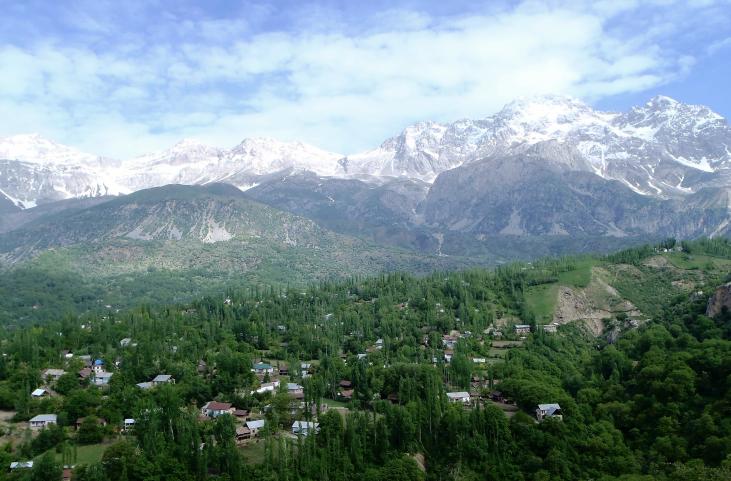Nuts from Arslanbob

Arslanbob (Kyrgyz: Арстанбап; Russian: Арсланбоб; Uzbek: Arslanbob) is a village, valley, mountain range, and a large wild walnut forest in the Jalal-Abad Region of Kyrgyzstan. Kyrgyzstan's first known export to Europe was the Arslanbob walnut. Two waterfalls are located in the area which attract tourists, expats and pilgrims, skiers and other whole year round.
The population of Arslanbob is from 15 to 25 thousand of people (depending on source). Most of the population are Uzbek, and less than 5% is Kyrgyz, Russian, Tatar, Tajik, Chechen etc…
Arslanbob is named after an 11th-century figure, Arslanbob-Ata (alternate: Arstanbap-Ata). He may have been of Arab descent as in that language, Arslan translates to "lion" and bab to "gate", while in Turkic languages, ata means "father of". ergo "father of the lion gate". 'Bob', used as a suffix, is a traditional practice used in the Arslanbob which denotes "a traveler and explorer.
The walnut forest is within the 60,000 hectares (150,000 acres) forest situated between the Fergana and Chatkal Mountains. The walnut forest is located at altitudes varying between 1,500 metres (4,900 ft) and 2,000 metres (6,600 ft) above sea level on the Fergana range's south-facing slopes. At 11,000 hectares (27,000 acres), the Arslanbob woodland is the largest walnut grove on Earth.
The economic activity of the town centres around the walnut. In the walnut season, which lasts for one month during September, the villagers of Arslanbob and other neighbouring villages engage themselves in collecting the nut. For this purpose, they hire a small plot of land for a fee on a five-year lease from the Forest Department. They collect the nuts, fruits and the wood. It is also an occasion of social rejoicing. Walnuts are priced high as they are a source of "oil, protein, anti-oxidants and omega 3 fatty acids». The walnut has served as barter trade in exchange for essential services. The barter practice is still observed in some cases in the villages here to pay fees to the teacher or to travel by bus.
Behind the village of Arslanbob are the Babash-Ata Mountains. There are two waterfalls nearby. One measures 80 metres (260 ft) high and has a slippery scree slope; it is situated in a cliff face north of the village. Another, to the east, is 23 metres (75 ft) in height and has two prayer caves, one of which is known as the Cave of the 40 Angels.
Legends:
A legend has it that a disciple of Prophet Mohamed, on a voyage in search of a heavenly place on earth, found such a place in a scenic valley in Kyrgyzstan. However, as the place lacked any kind of vegetation, he appraised Prophet Mohamed of the situation. The Prophet Mohamed then sent him seeds of many trees to plant there which included walnut. The disciple, Arslanbob, then went up a mountain and scattered the seeds which grew into a garden of trees which he tended. Because of this association with the Prophet Mohamed, Muslims consider this place as sacred. According to local legend, it is said that Arslanbob-Ata's wife "betrayed" him to his enemies which resulted in his death. It is also stated that his footprints, hand prints and bloodstains are also seen here.
Other legends include that Alexander the Great planted the first walnut trees in Arslanbob; and that he carried several sacks of walnuts with him which he had used to pay boatmen to ferry his troops.
Another legend attributes walnut distribution to the Silk Road
Samuel Maret

